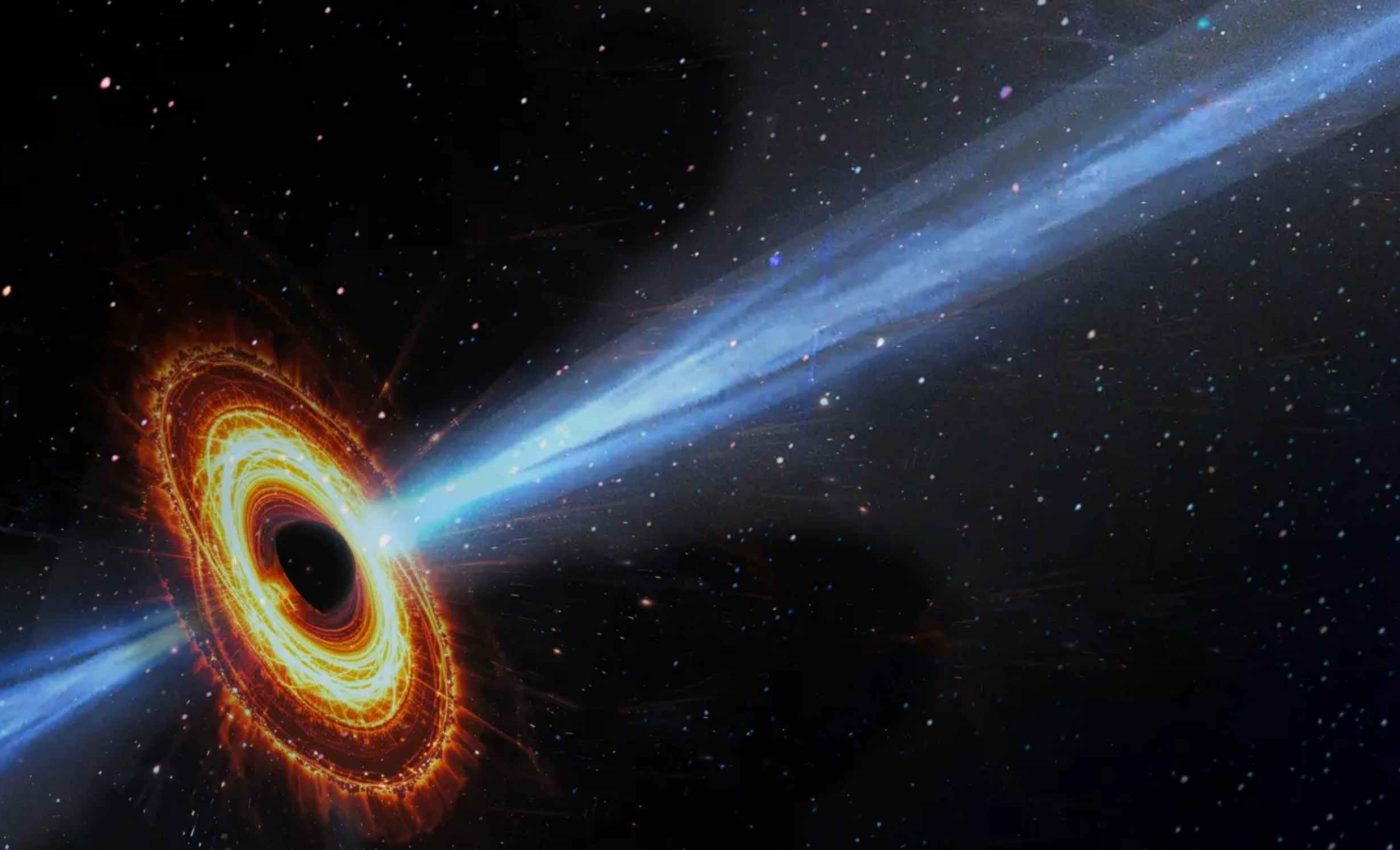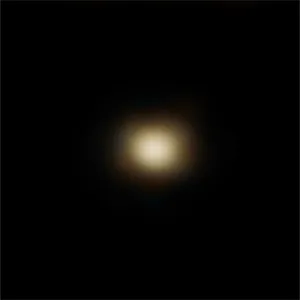
Violent light show observed around Milky Way's black hole
The universe is full of wonders, but few are as mesmerizing as the unpredictable brilliance of a supermassive black hole. At the core of the Milky Way, 26,000 light-years from Earth, Sagittarius A* flickers and flares in an ongoing celestial performance.
Unlike the serene darkness often associated with black holes, this one is anything but silent.
Imagine a disco ball in deep space, radiating bursts of energy across the cosmos. This cosmic dynamo produces rapid flashes, some lasting mere seconds, while others burn brightly for extended periods.
The black hole’s flares, scattered across various timescales, are unlike anything astronomers expected to see.
Thanks to the James Webb Space Telescope, researchers now have the clearest, longest look at this astonishing activity, which reveals a chaotic but fascinating pattern.
Mysterious black hole flares
For decades, black holes have remained enigmatic, with their immense gravitational pull swallowing everything in their path.
Scientists have only been able to study them through indirect observations, such as the effects on nearby stars or the radiation emitted by heated gas falling into the abyss.
But now, with Webb’s Near-Infrared Camera (NIRCam), astrophysicists can witness Sagittarius A* in action like never before.
By peering deep into the heart of our galaxy, Webb has captured a continuous sequence of flares erupting from the black hole’s surrounding accretion disk.
These flashes come in varying intensities, some as brief flickers and others as prolonged, blinding outbursts. What makes this discovery even more intriguing is the sheer unpredictability of the phenomenon.
A black hole that never rests
Farhad Yusef-Zadeh of Northwestern University, who led the study, described the black hole’s activity as a constantly shifting display of light.
“In our data, we saw constantly changing, bubbling brightness,” said Yusef-Zadeh. “And then, boom! A big burst of brightness suddenly popped up. Then, it calmed down again.”
“We couldn’t find a pattern in this activity. It appears to be random. The activity profile of this black hole was new and exciting every time that we looked at it.”
These findings paint a picture of a black hole that never rests. The accretion disk surrounding Sagittarius A* releases a steady stream of energy, creating a nonstop spectacle of fireworks.
Observing an unstable giant
The research team observed Sagittarius A* over the course of a year, totaling 48 hours of direct monitoring in eight- to ten-hour periods. This extensive observation time allowed them to track the black hole’s behavior, and reveal its persistent, flaring activity.
The results exceeded expectations. While scientists predicted some level of flaring, the frequency and intensity of these bursts were surprising.
The accretion disk produces between five and six major flares each day, interspersed with smaller, unpredictable bursts. Some eruptions are faint and short-lived, while others shine with an intensity that outshines entire star systems.

Explaining the black hole’s flares
Despite this chaotic display, the researchers believe that two different processes are driving the black hole’s flares. Smaller, short-lived bursts likely result from minor disturbances within the swirling accretion disk.
These disturbances cause pockets of plasma – hot, electrically charged gas – to become compressed, releasing short, sudden flashes of energy. Yusef-Zadeh compared this phenomenon to solar flares.
“It’s similar to how the Sun’s magnetic field gathers together, compresses, and then erupts a solar flare,” he explained. “Of course, the processes are more dramatic because the environment around a black hole is much more energetic and much more extreme. But the Sun’s surface also bubbles with activity.”
Meanwhile, the most powerful flares appear to be caused by magnetic reconnection events. These occur when tangled magnetic fields within the accretion disk snap and realign, unleashing massive amounts of energy.
“A magnetic reconnection event is like a spark of static electricity, which, in a sense, also is an ‘electric reconnection,’” noted Yusef-Zadeh.
Energy loss in black hole flares
One of the most intriguing discoveries from Webb’s observations was a subtle but important time delay in the black hole flares’ brightness.
Because NIRCam can observe two wavelengths simultaneously – 2.1 and 4.8 microns – the scientists were able to compare how the flares changed over each wavelength.
They noticed something unexpected: events at the shorter wavelength consistently brightened before those at the longer wavelength. The delay ranged from just a few seconds to as long as 40 seconds.
“This is the first time we have seen a time delay in measurements at these wavelengths,” Yusef-Zadeh said. “We observed these wavelengths simultaneously with NIRCam and noticed the longer wavelength lags behind the shorter one by a very small amount.”
This delay offers crucial insight into the physical processes surrounding the black hole. One possible explanation is that particles in the flare gradually lose energy over time, first dimming at shorter wavelengths before fading at longer wavelengths.
The findings suggest that the particles responsible for the emission are likely spiraling around magnetic field lines, and gradually radiating away their energy.
Looking deeper into the chaos
To better understand Sagittarius A*, the research team hopes to conduct even longer observations in the future. They aim to observe the black hole continuously for 24 hours, reducing interference from background noise and allowing for an even clearer picture of the activity.
“If we can observe for 24 hours, then we can reduce the noise to see features that we were unable to see before. That would be amazing. We also can see if these flares repeat themselves or if they are truly random,” enthused Yusef-Zadeh.
By extending the observation period, researchers hope to answer critical questions: Do these black hole flares follow a hidden pattern? Are there external factors influencing the frequency of eruptions? Or is this randomness a fundamental characteristic of the black hole itself?
A window into the unknown
Sagittarius A* continues to challenge scientists’ understanding of black holes and their behavior. The James Webb Space Telescope is providing an unprecedented view into the heart of our galaxy, offering new perspectives on the processes that govern these mysterious cosmic entities.
This international collaboration, led by NASA in partnership with ESA and CSA, is not just revealing secrets about our own galaxy but is also shedding light on the nature of black holes across the universe.
The Milky Way’s central black hole may remain unpredictable, but thanks to cutting-edge technology and persistent observation, its cosmic fireworks are no longer hidden in the shadows.
The study was published in The Astrophysical Journal Letters.
—–
Like what you read? Subscribe to our newsletter for engaging articles, exclusive content, and the latest updates.
Check us out on EarthSnap, a free app brought to you by Eric Ralls and Earth.com.
—–













